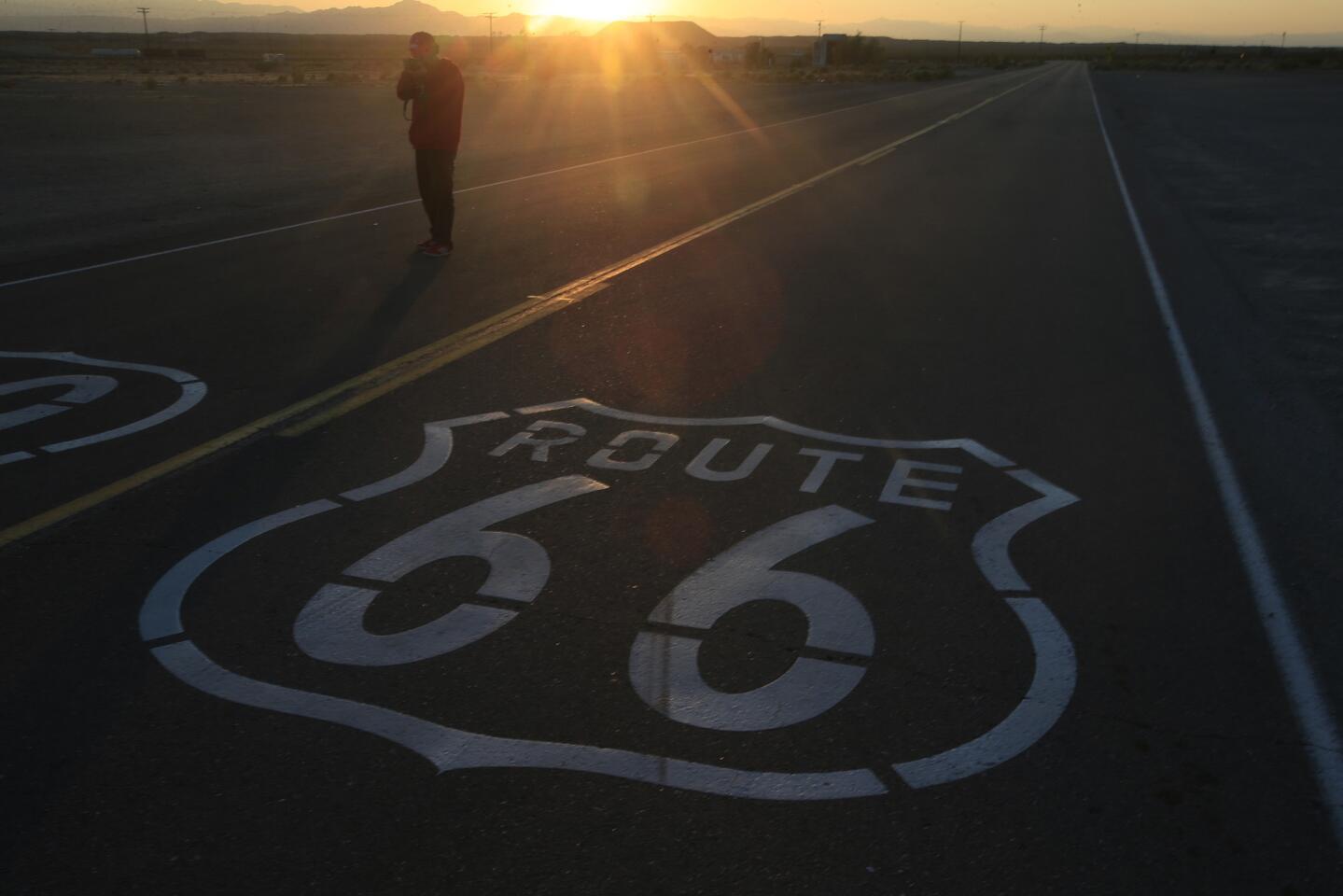Unless Route 66 business owners can attract a younger and more diverse crowd, one that matches the evolving demographics of America, the shops and oddball attractions along the route will shut down for good.
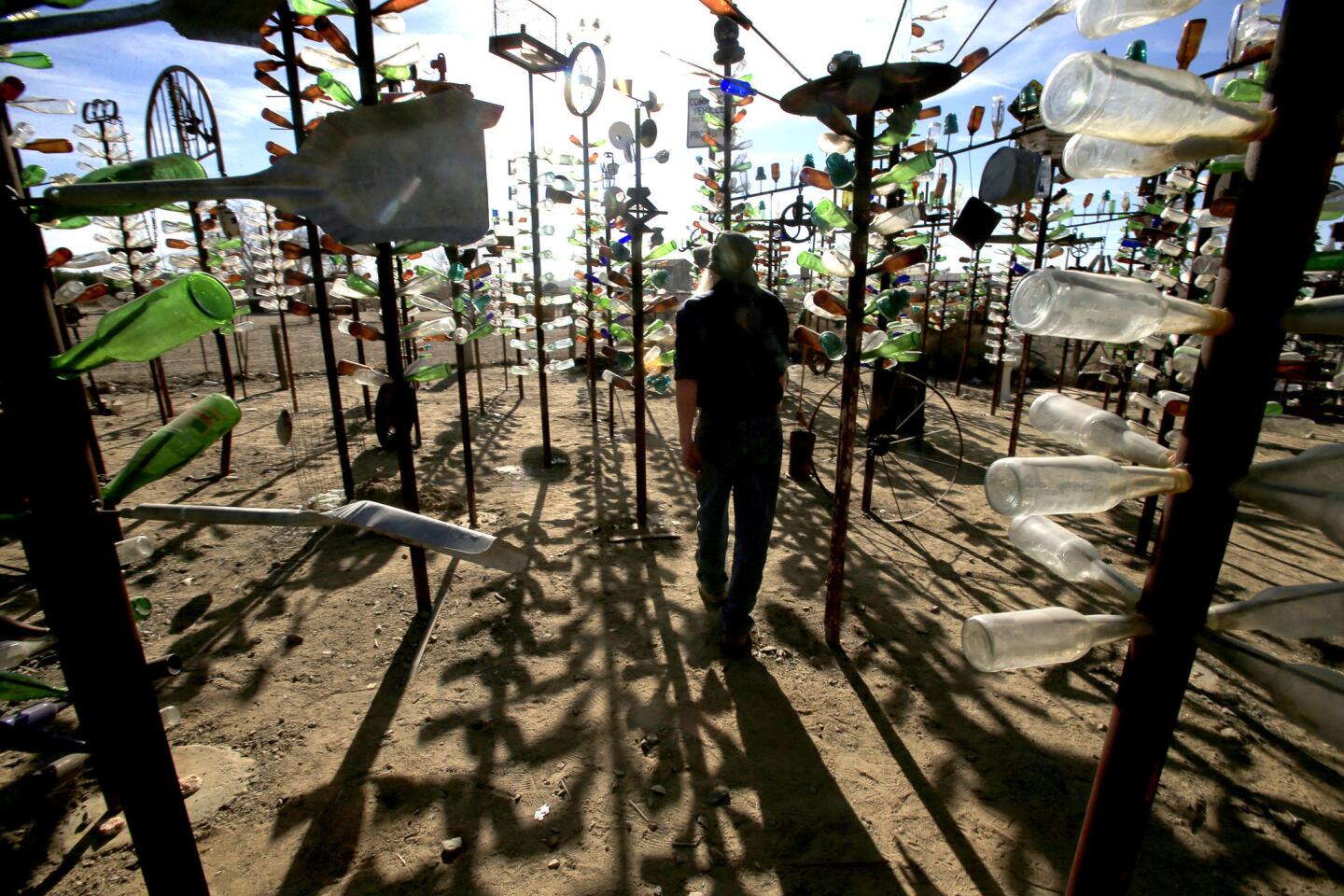
The “Bottle Tree Ranch,” a forest of metal trees adorned with colored bottles just outside of Barstow, was built by Elmer Long, a 67-year-old retired cement worker. During the busy summer months, he said, his bottle trees draw up to 1,000 visitors a day. (Mark Boster / Los Angeles Times)
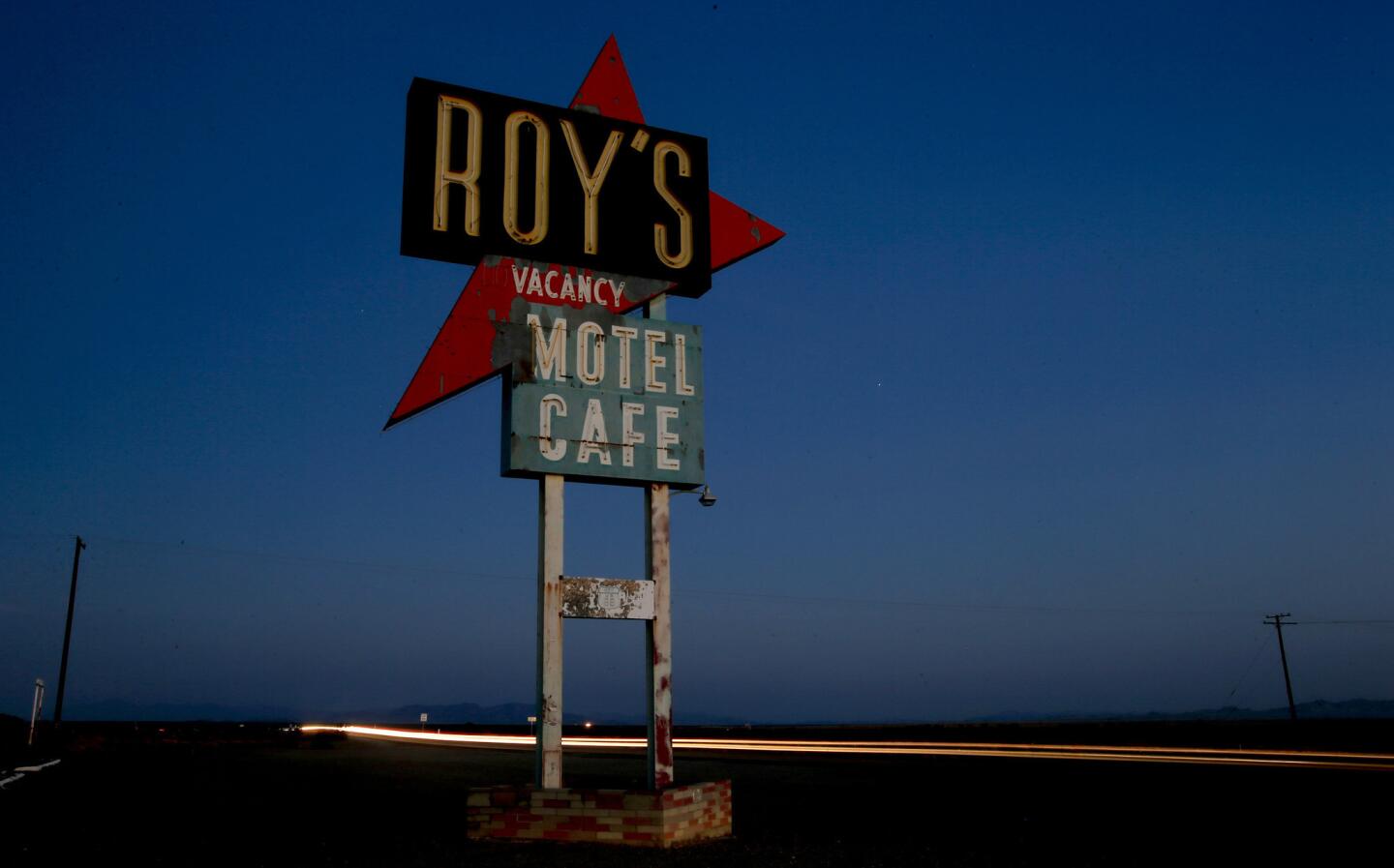
Amboy, Calif., (population 17), was once a bustling pit stop. Today, the only commerce happens at Roy’s Motel and Cafe. The cafe sells only soft drinks and snacks. The hotel is closed because of a lack of water. (Mark Boster / Los Angeles Times)
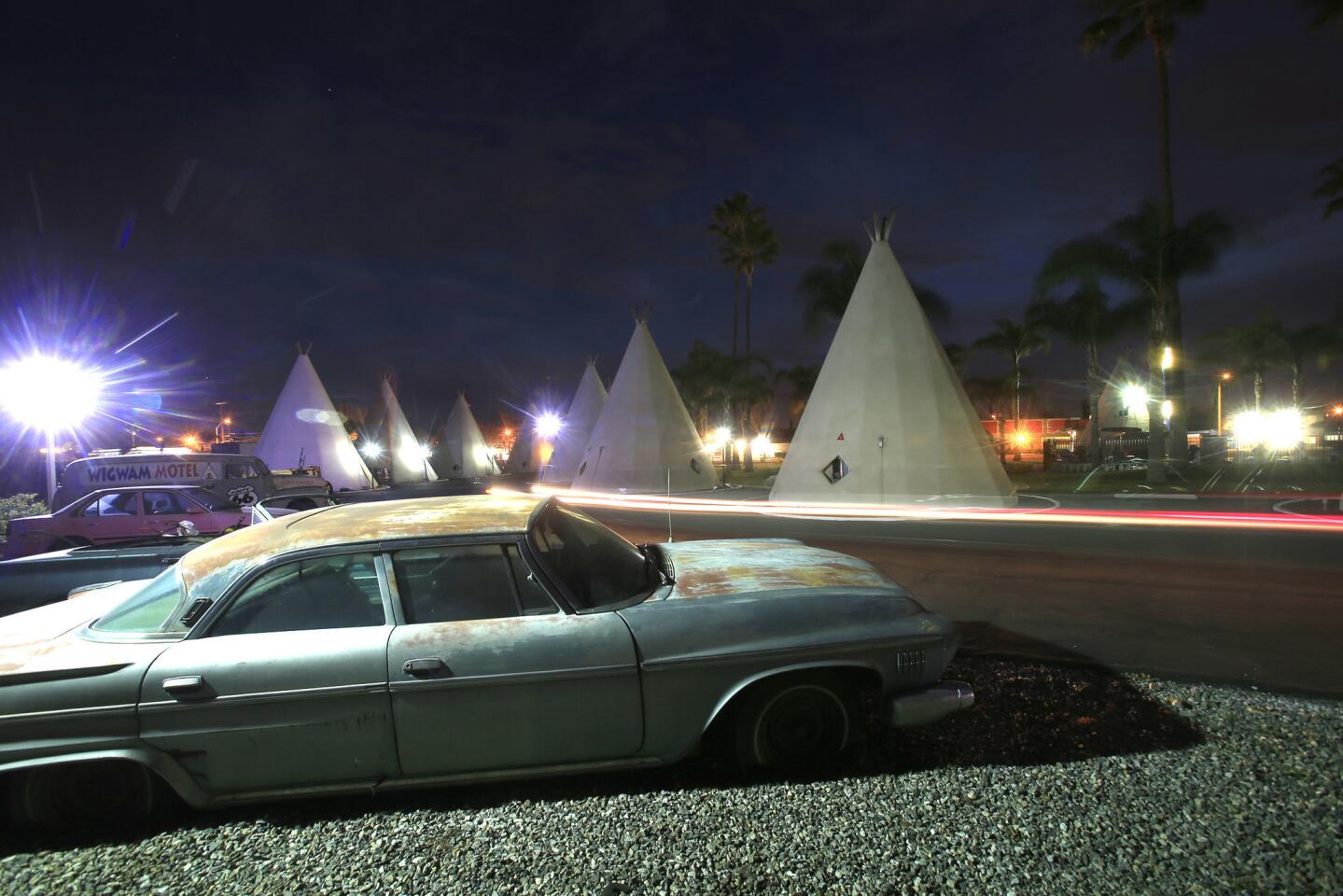
Long a fixture on Route 66, the Wigwam Motel in San Bernardino glows in the evening light as customers come and go in January. Route 66 continues to attract motorists and tourists from around the world who want to experience the legendary nostalgia of its roadside attractions. (Mark Boster / Los Angeles Times)
Advertisement
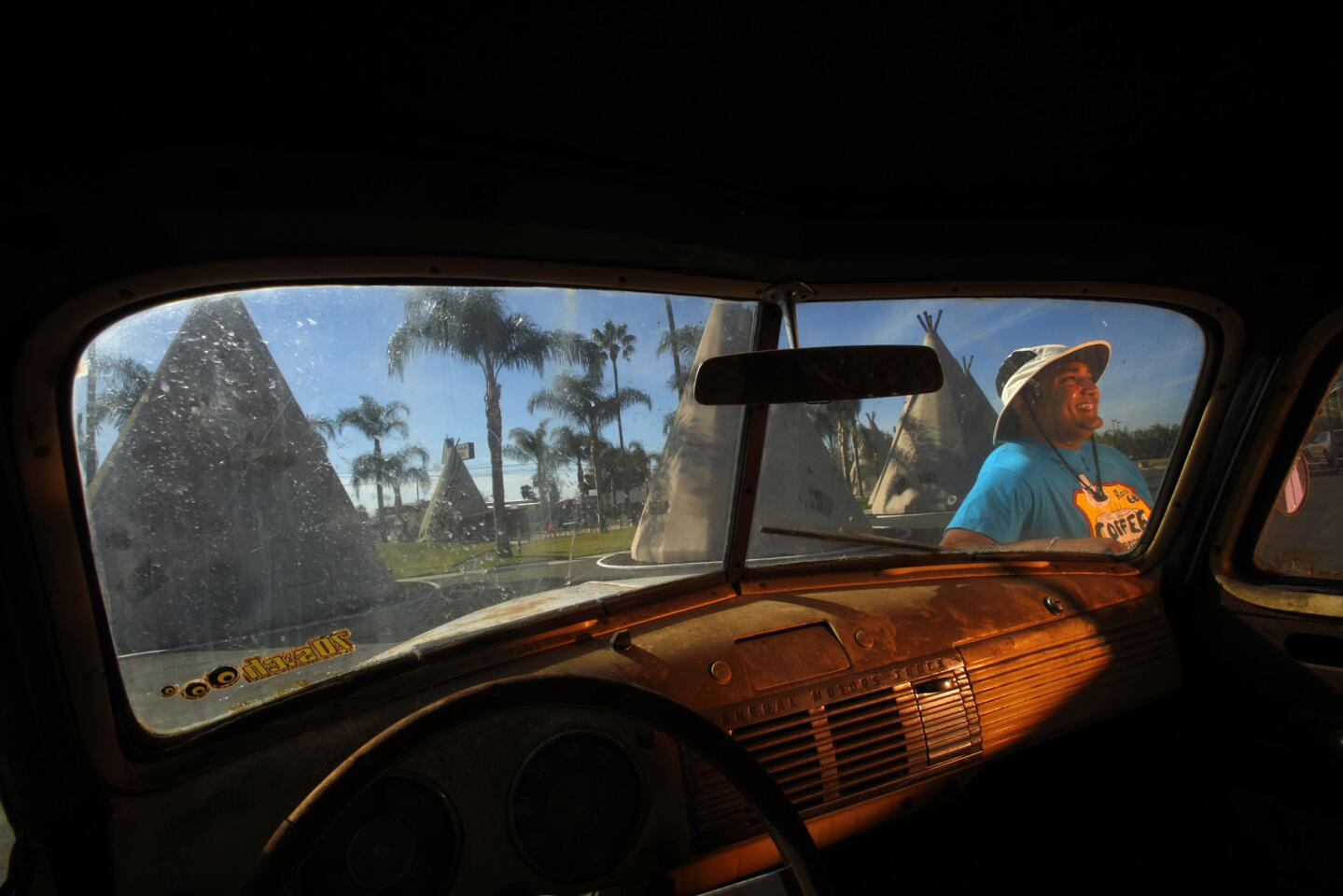
Kumar Patel operates the Wigwam Motel, a clutch of 20 tepee-shaped rooms on Route 66 in San Bernardino. He has become a tireless promoter of the highway’s culture. He sees that as a way to keep the history of Route 66 alive and fill his motel rooms. (Mark Boster / Los Angeles Times)
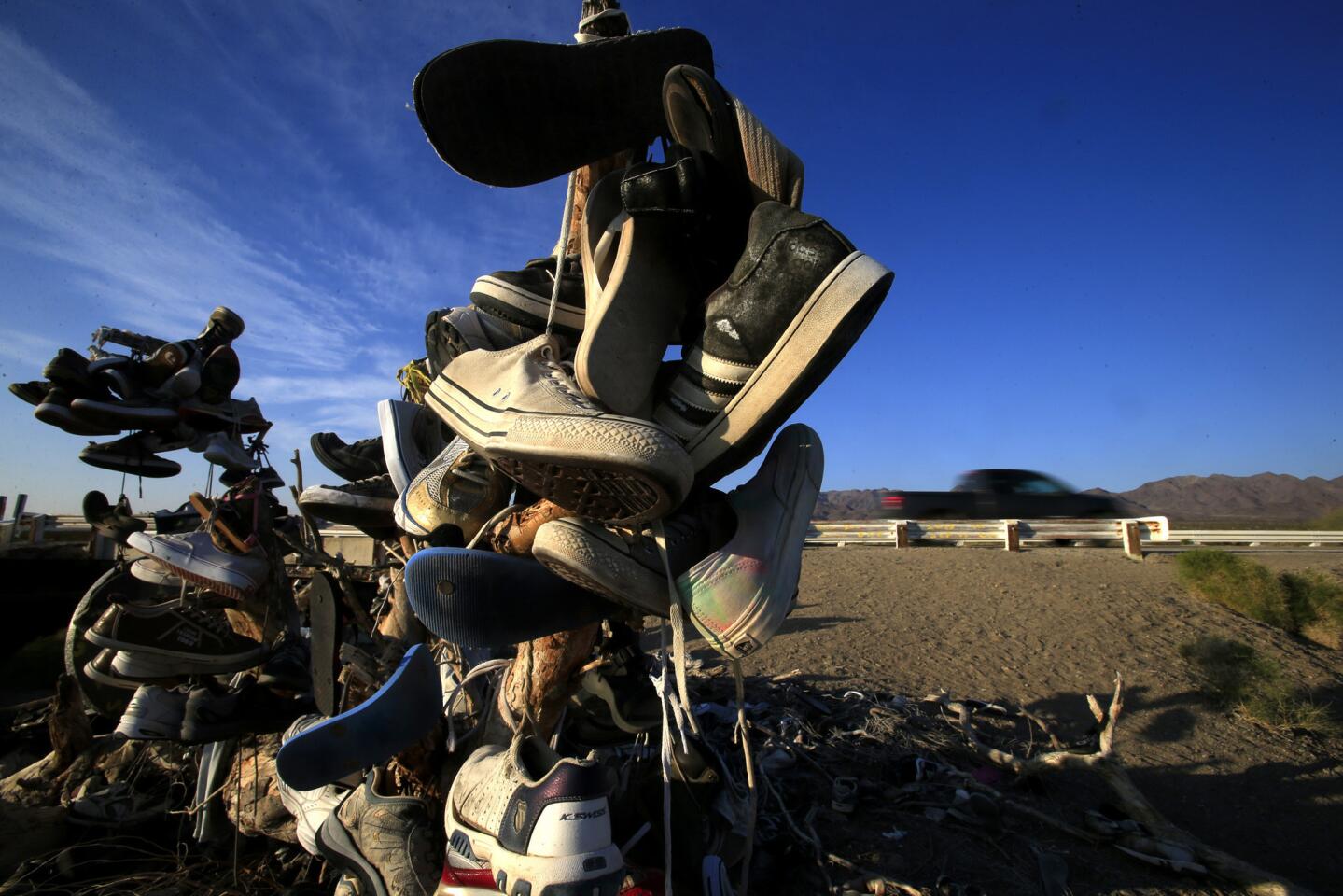
A downed paloverde tree about half a mile outside of Amboy, Calif., is called the “Shoe Tree” because it toppled under the weight of hundreds of shoes tossed on the branches by visitors. It’s a tradition that locals say was started by an arguing couple and continues today. (Mark Boster / Los Angeles Times)
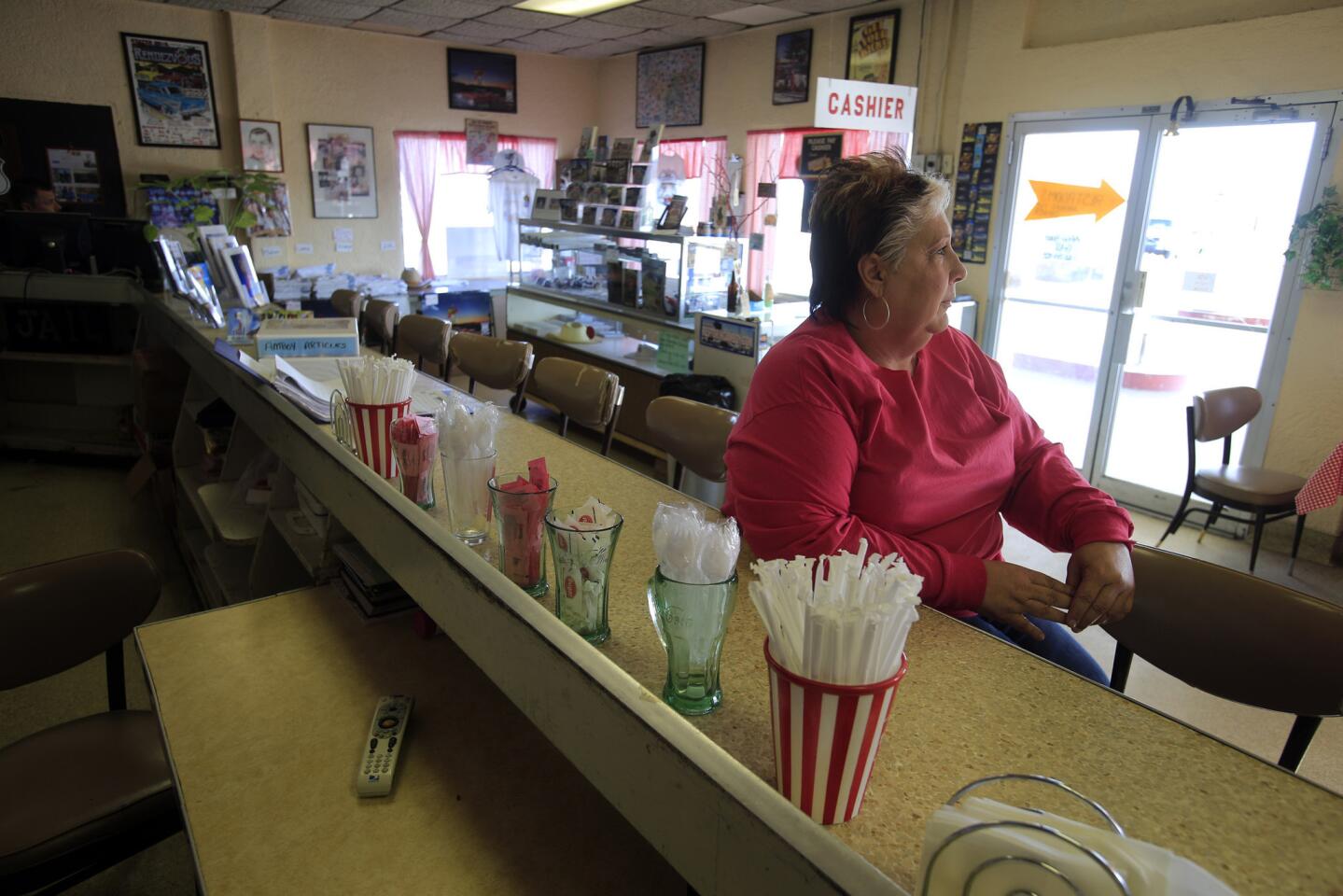
Debra Parnell sits at the counter in the old coffee shop at Roy’s Motel and Cafe in Amboy. Parnell is the postmaster in the tiny town. (Mark Boster / Los Angeles Times)
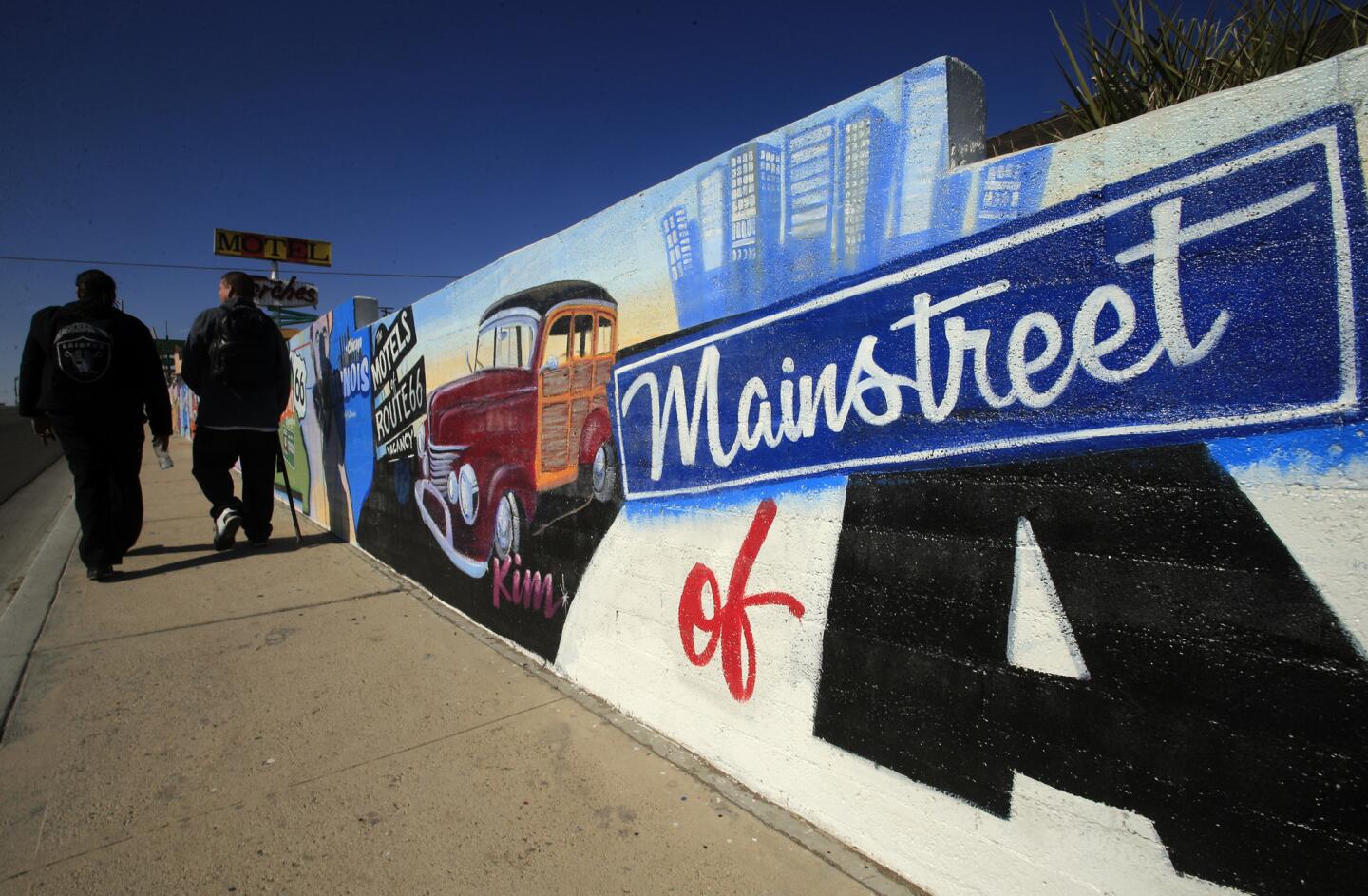
Murals along Route 66 in Barstow remind motorists and tourists of the highway’s heritage. (Mark Boster / Los Angeles Times)
Advertisement
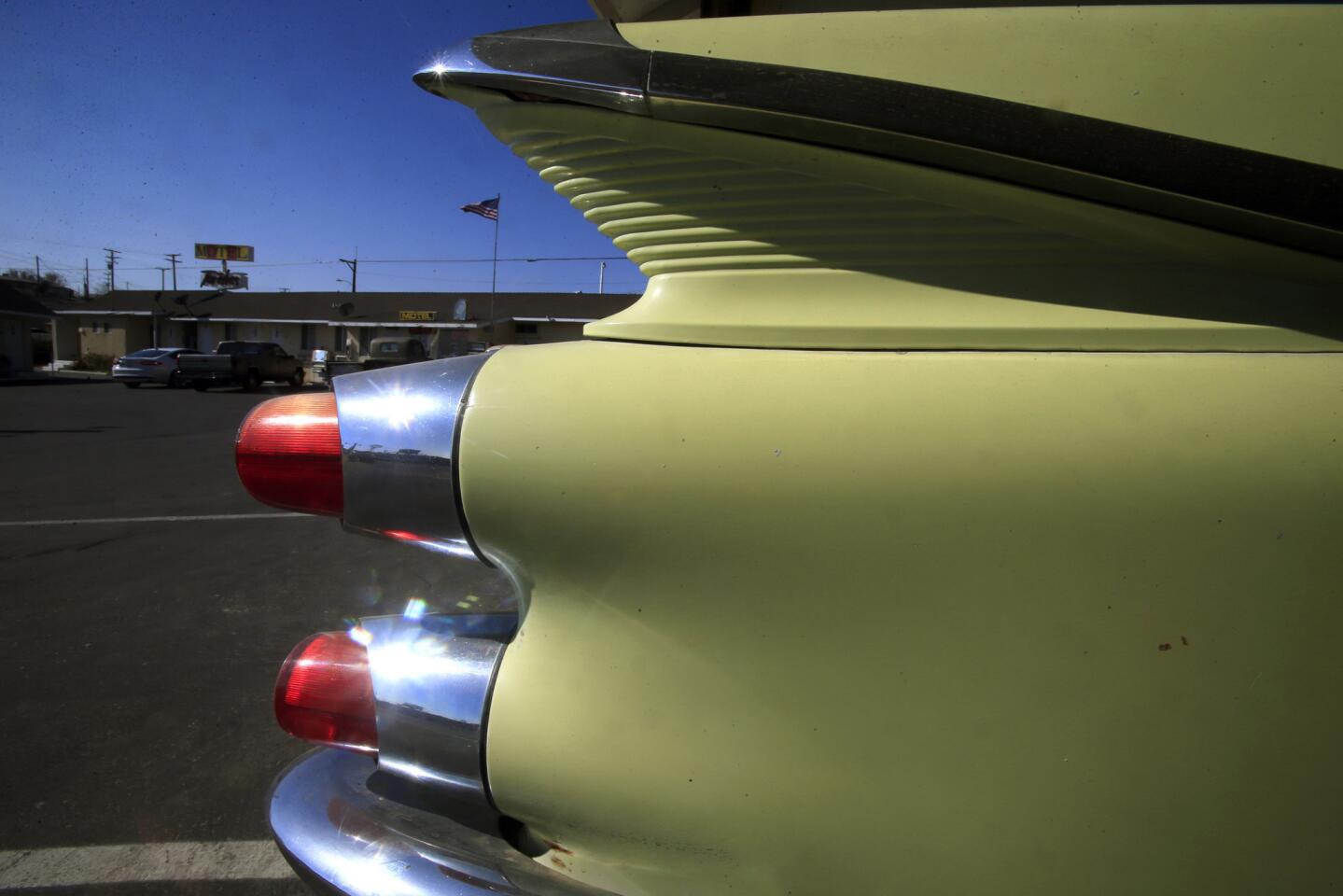
The Route 66 Motel in Barstow keeps the memory of a bygone era alive with old cars like this brightly colored Dodge and other memorabilia. (Mark Boster / Los Angeles Times)
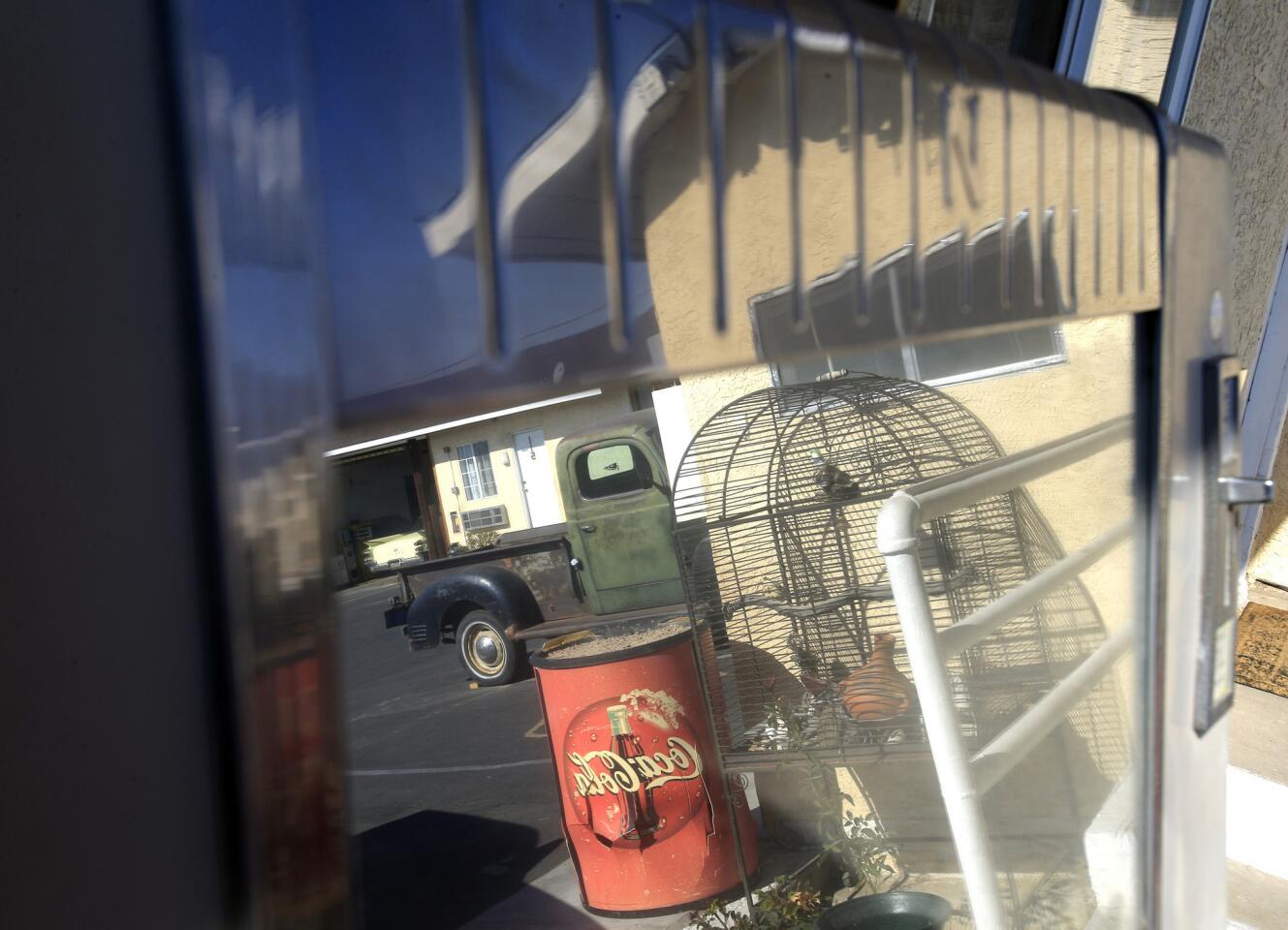
Memorabilia is reflected in the mirrored front of a vintage cigarette machine at the Route 66 Motel in Barstow. (Mark Boster / Los Angeles Times)
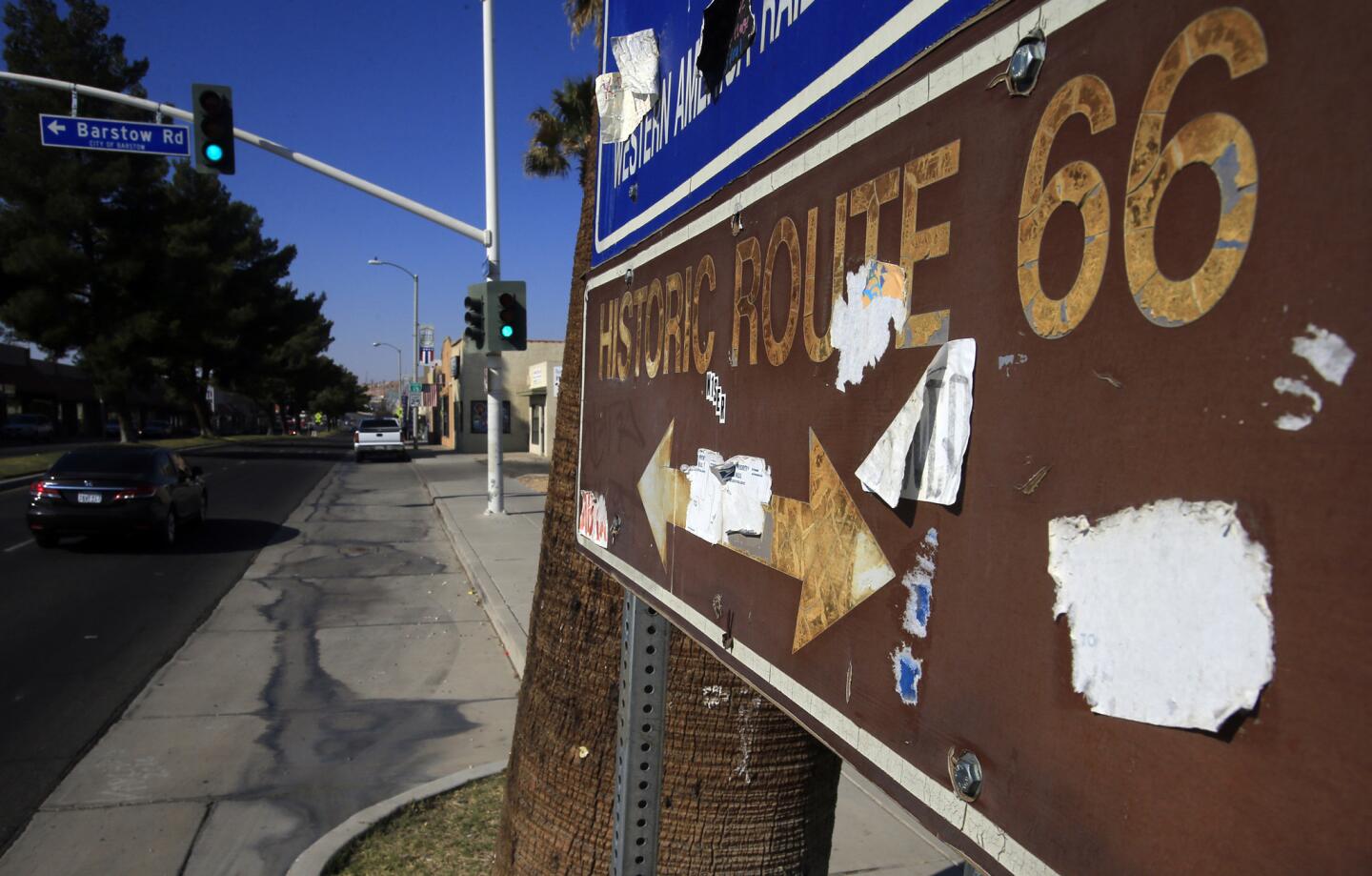
A Route 66 sign in Barstow. (Mark Boster / Los Angeles Times)
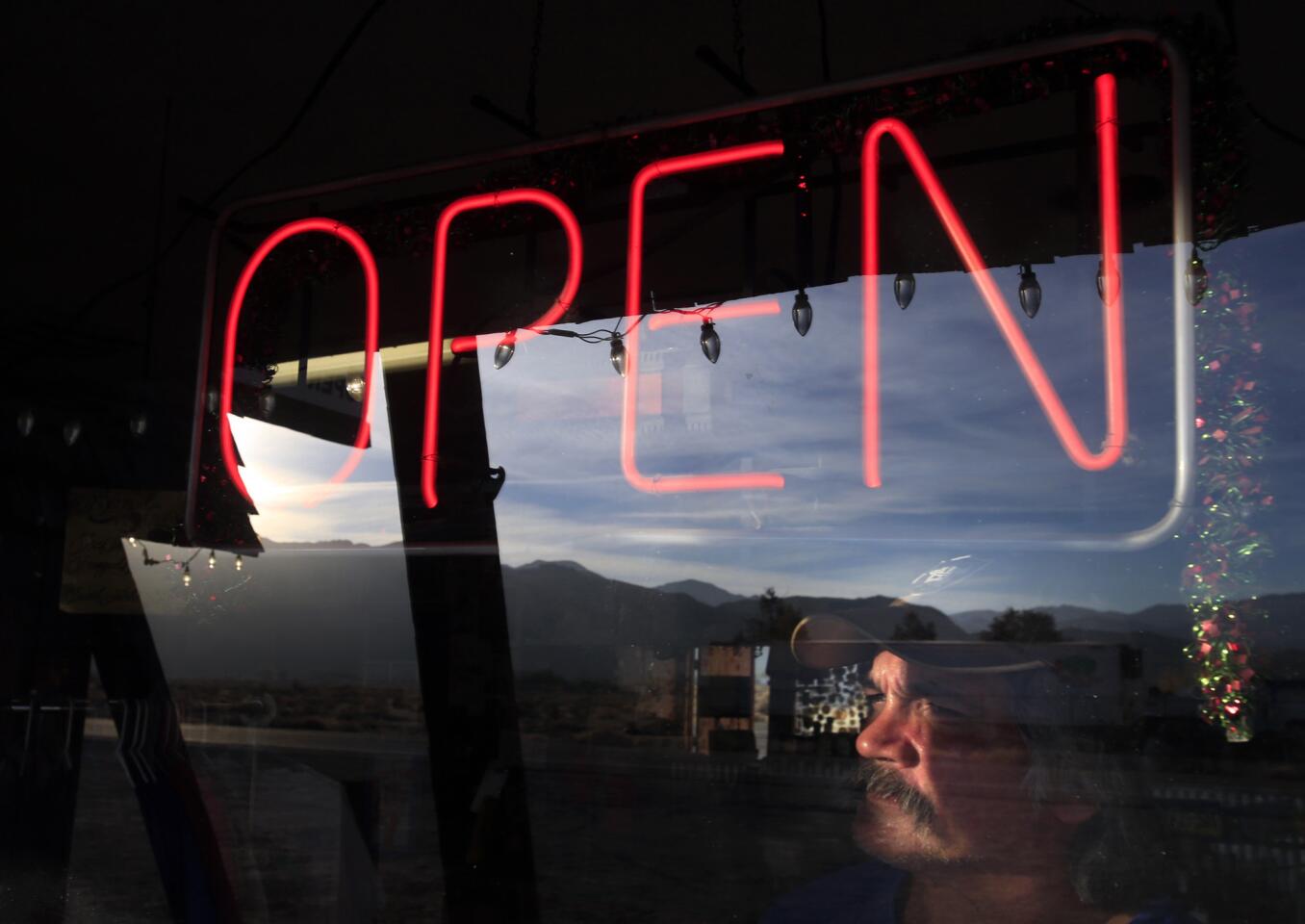
Gilbert Blancaflor, an employee at the Bagdad Cafe in Newberry Springs, Calif., looks out the window in January while he waits for the next batch of tourists on Route 66 to stop in for a cold drink or burger. (Mark Boster / Los Angeles Times)
Advertisement
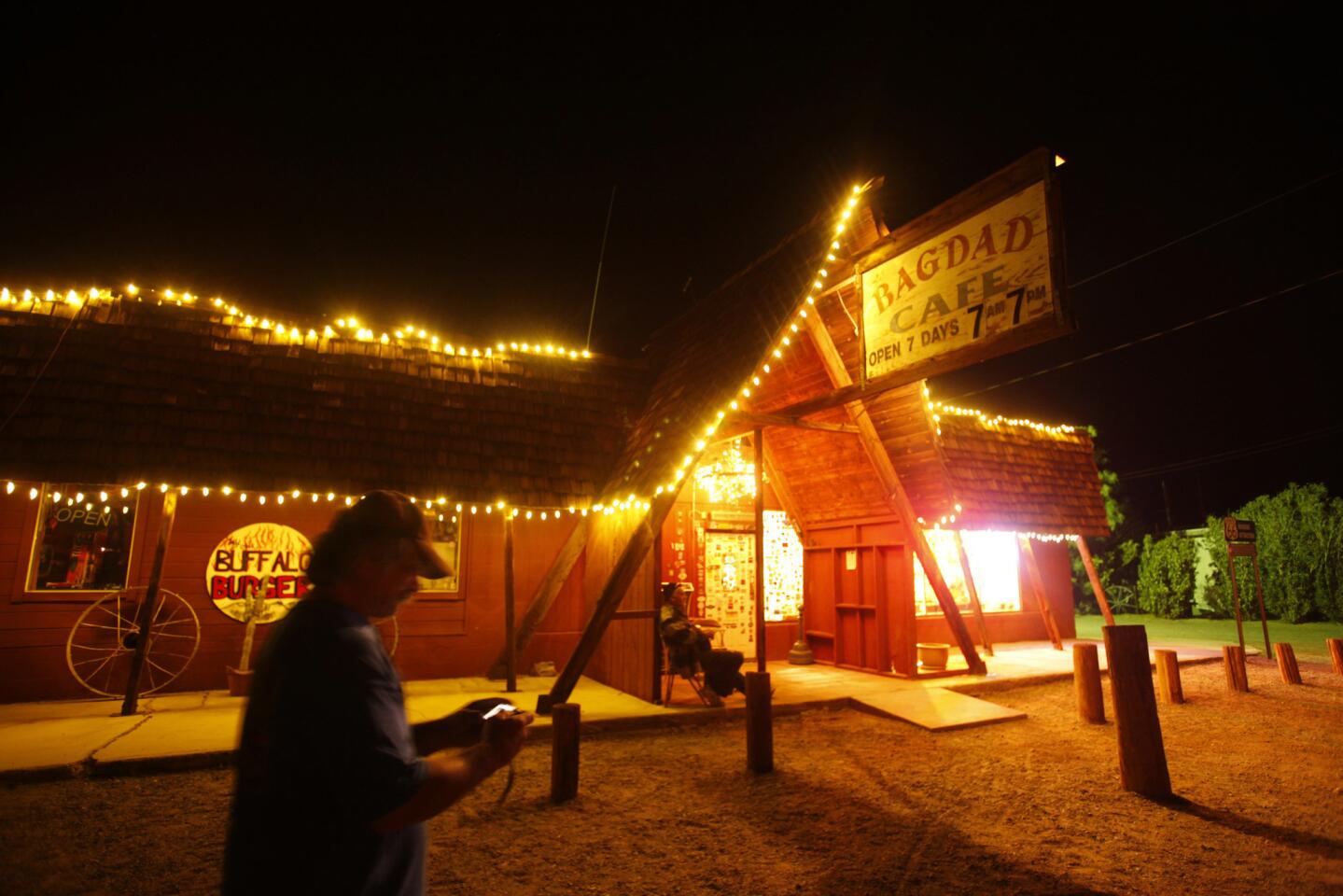
The Bagdad Cafe glows in the evening light along Route 66 in Newberry Springs, Calif. (Mark Boster / Los Angeles Times)
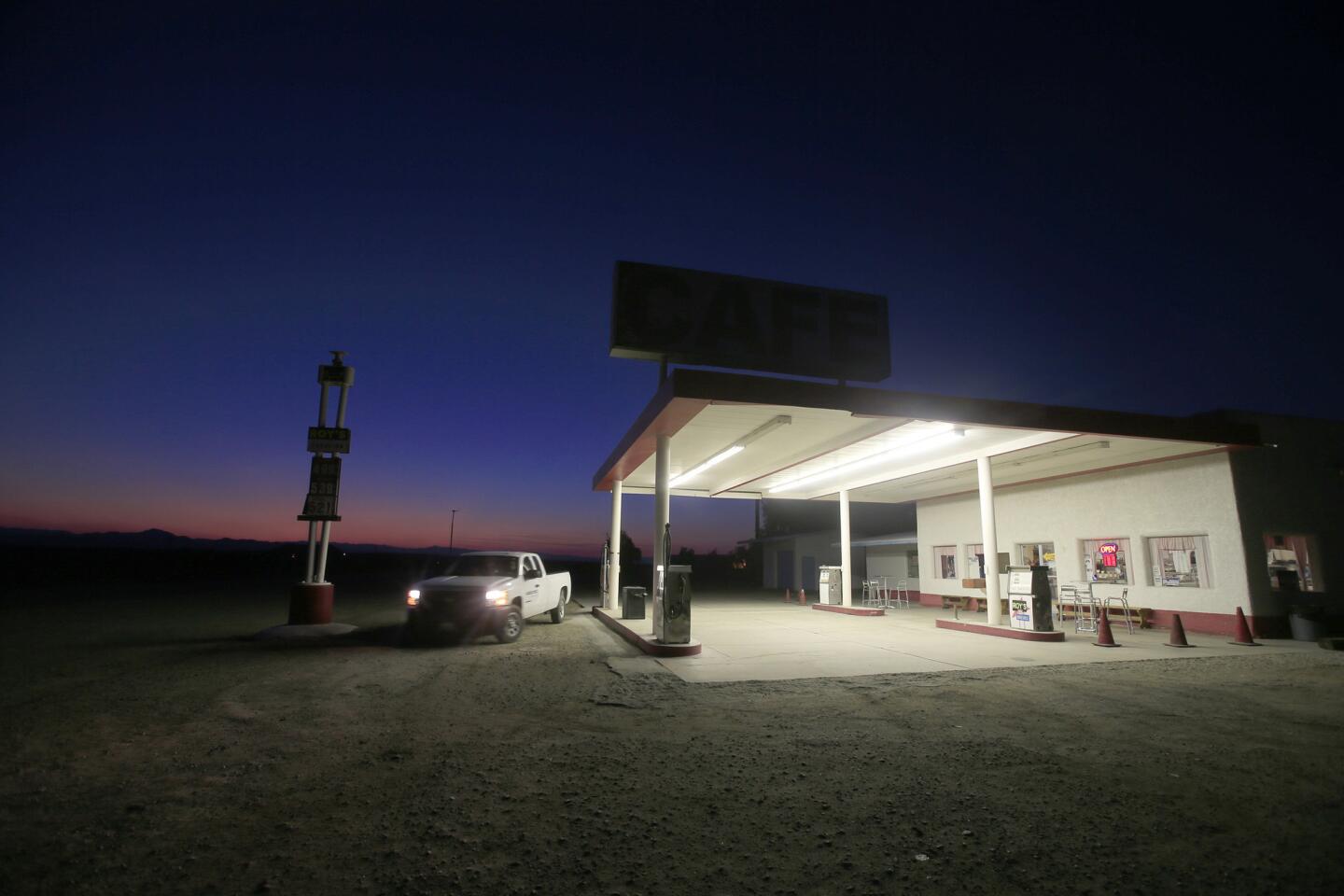
Evening sets in at Roy’s Motel and Cafe along Route 66 in Amboy, Calif. (Mark Boster / Los Angeles Times)
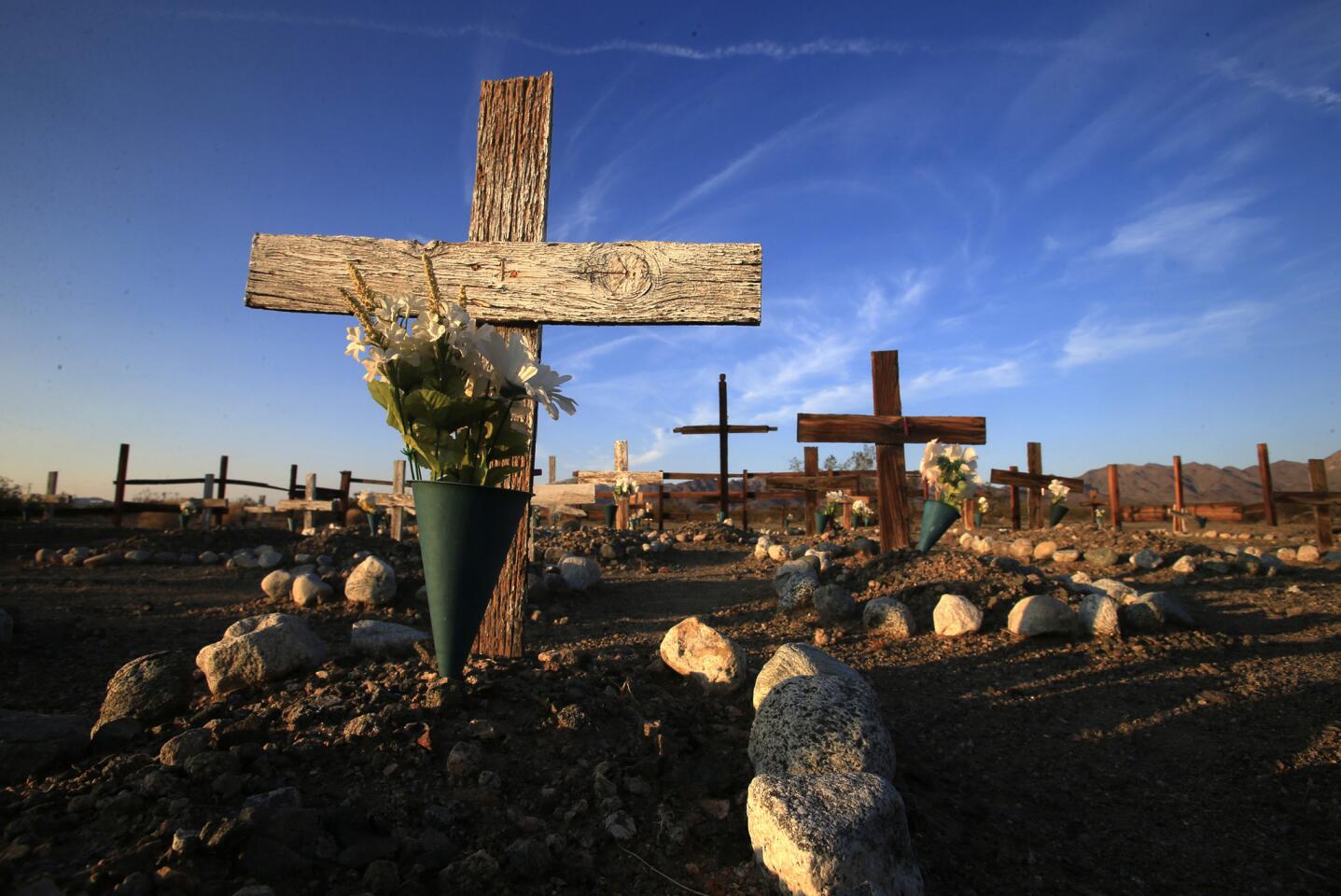
The graveyard in Amboy, Calif., adorned with simple wooden crosses and grave markers, is just a short walk from Route 66. (Mark Boster / Los Angeles Times)
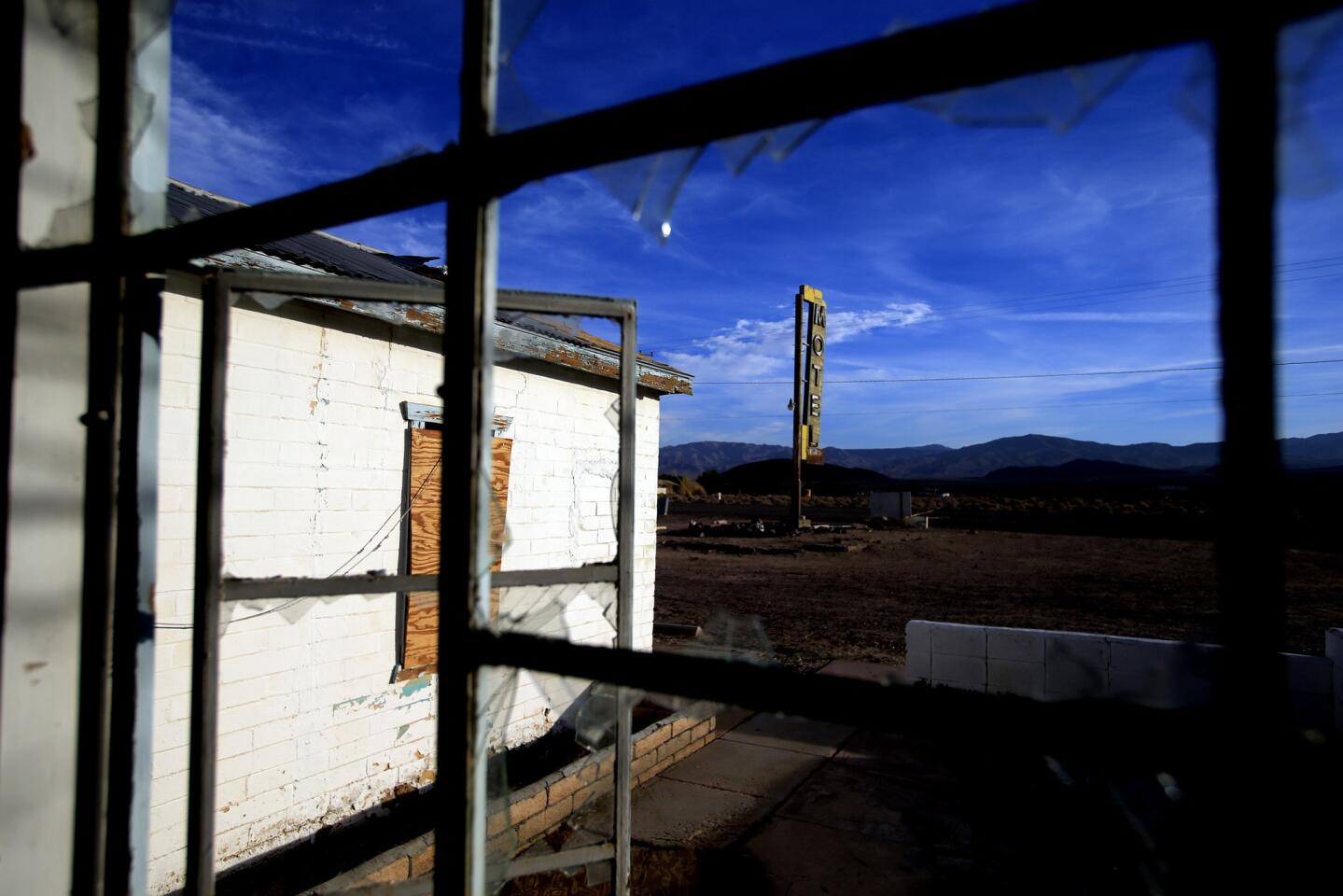
Broken windows and crumbling structures at the Hennings Motel in Newberry Springs, Calif., frame Route 66 in January. (Mark Boster / Los Angeles Times)
Advertisement
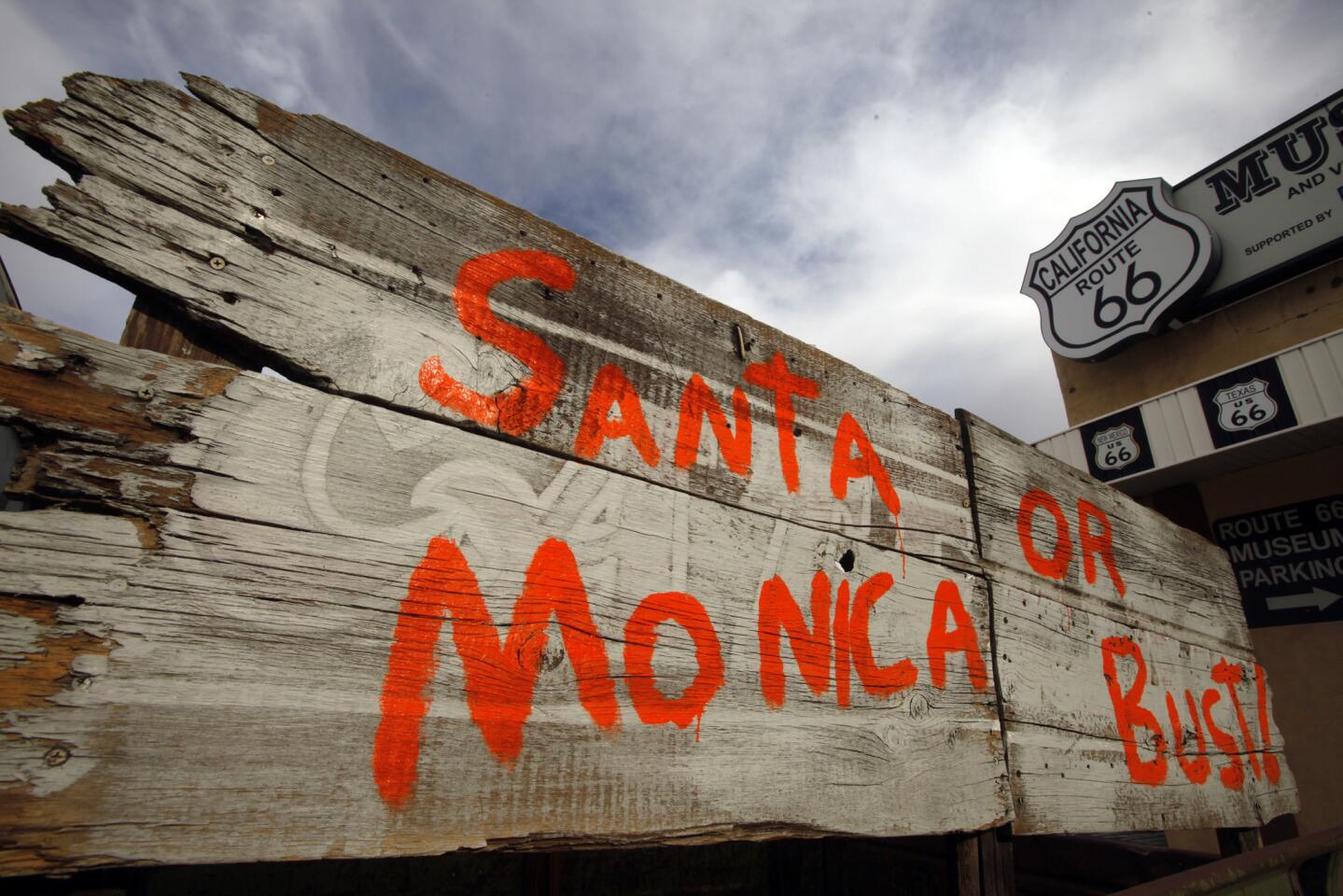
Boards on an old truck parked next to the Route 66 Museum in Victorville carry a message that may not be original but conveys the spirit of travel and tourism along the historic highway. (Mark Boster / Los Angeles Times)
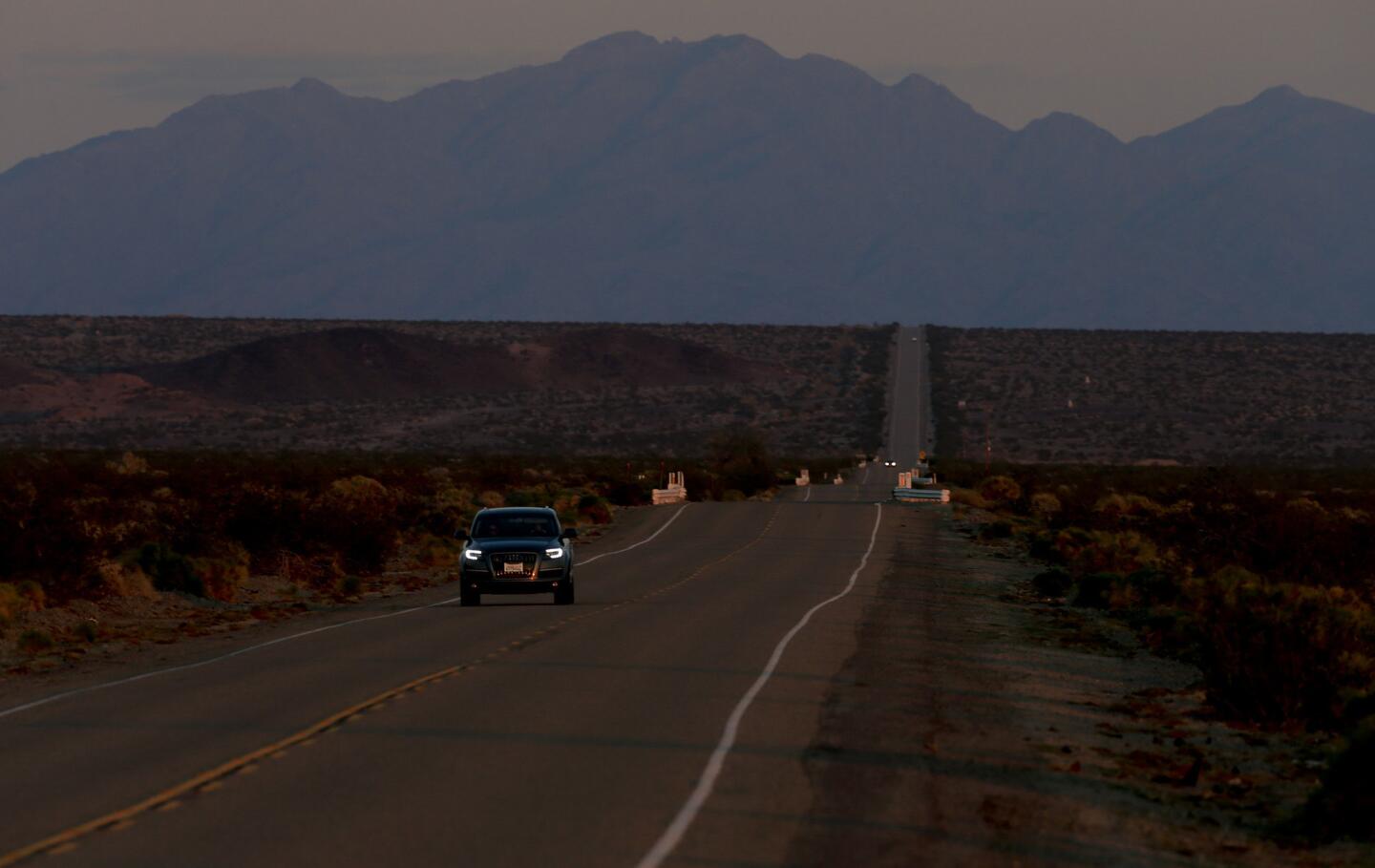
Route 66 travelers today have a median age of 55 and 97% are white, according to a 2011 study by David Listokin, a Rutgers University economics professor. Only 11% of the travelers on the road are ages 20 to 39, according to the study. Above, Route 66 in Amboy, Calif. (Mark Boster / Los Angeles Times)
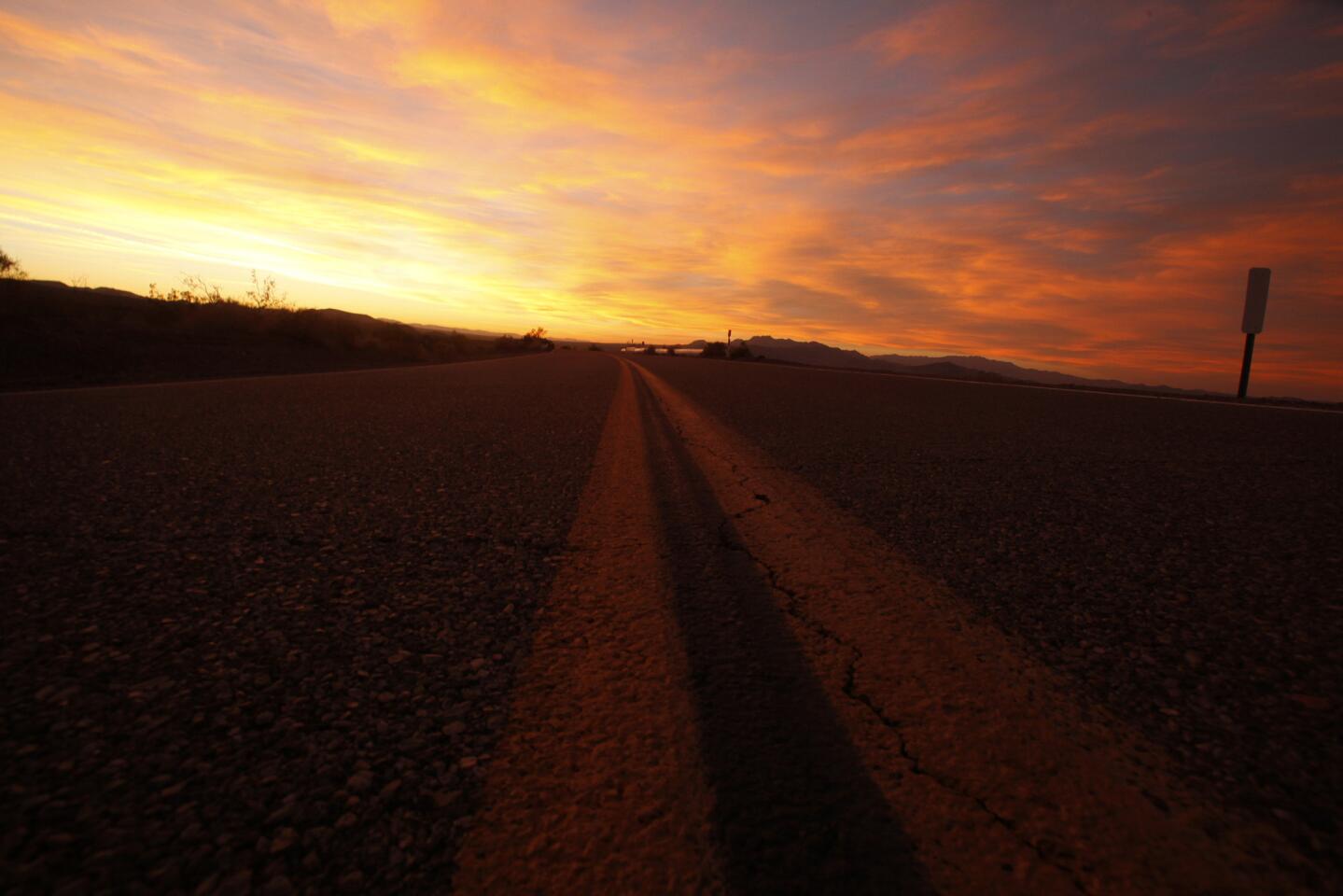
Route 66 in California between Newberry Springs and Ludlow continues to draw tourists longing for bygone days and wide, open stretches of highway to explore at sunset. (Mark Boster / Los Angeles Times)
